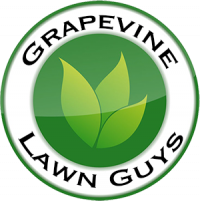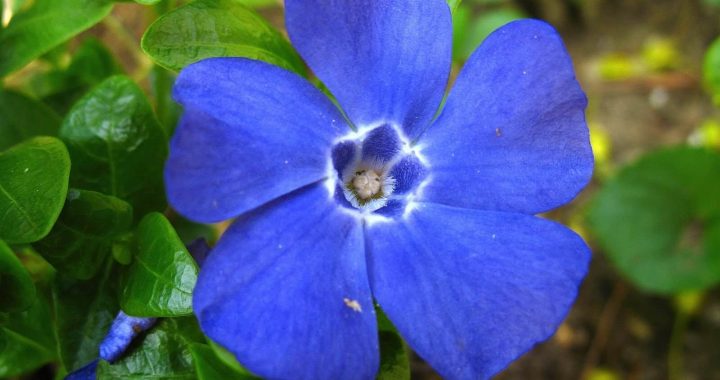A blue garden may be soothing or relaxing, or on the contrary bright, all depends on the shades of blue that you will use and the plants that will accompany your blue blooms.
Designing a blue garden requires a good knowledge of blue-flowering plants, as well as safe handling of the palette of various shades of blue.
This practical sheet explains all the secrets to create a blue garden, big or small but never monotonous, thanks to contrasting shapes and colors and subtly tuned.
Zoom on the other elements of the garden
The garden furniture, the pottery used, even the doors and shutters of the house can be of great importance to the blue garden. By accentuating the visual impression of blue, they can even transform into a blue garden a garden that is only partially (this is for example the case of the famous Majorelle garden of Marrakech).
Think for example:
- At a garden shed painted in blue.
- Soft blue doorframes for a façade covered with volubilis or deep blue clematis.
- To a grouping of hotpot in bright blue containers.
- To garden furniture painted in soft blue or azure blue.
- Prepare a Swedish painting for exterior woodwork
Note: it is quite possible to create a blue garden at the origin and to change it later by introducing complementary colors (yellow, orange) that will give it a totally different look.
1. Choose your type of blue garden
It is possible to design a small totally blue garden, but most of the time only part of the garden will be treated in monochrome blue, for example:
- An arbor covered with climbing blue and surrounded by perennials of matching color.
- A square bordered with boxwood or Plessis garnished with blue flowers.
- Blue flower pots in deep blue containers, at the foot of a wall where volubilis or blue clematis grow.
- A flowerbed or a blue massif.
2. Harmoniously blend the different shades of blue
There are two main types of blue:
- blues (e.,g. blueberry);
- and blues on purple or purple (for example, most so-called blue clematis ).
In a blue garden, the difficulty is to marry these two types of blue harmoniously, the juxtaposition pure and straightforward of the two shades is not always pleasing to the eye. To harmonize the whole:
- Group the blues, from the paler to the most intense.
- Group a little further in the garden the blues pulling on purple or purple.
- Separate the two groups by other colors (silver, white, gold, green).
3. Match blue to other colors
White, essential ally of the blue
Although blue remains dominant, white must be present in the blue garden. It will form a pastel harmony with pale blues and a striking contrast with intense blues. White is also an important link in a predominantly blue garden.
Money, another companion of blue
Money plays the same binding role as white. Do not hesitate to plant in your blue garden perennials silver gray, with evergreen foliage:
- woolly spike (Stachys lanata);
- ears of white lavender Edelweiss;
- sagebrush (Artemisia Powis castle, Artemisia schmidtiana Nana) or freer (Artemisia arborescens).
Gold to break the coldness of blue
The golden color, brought by blond grasses, plays a significant role in the blue garden: it offers the advantage of breaking the cold blue without denaturing the character of the garden. For example, use:
- the little stepa tenuifolia with its soft, shimmering golden hair;
- pennisetum alopecuroid compressum;
- stipa gigantea at the bottom of a predominantly blue flowerbed.
The purple
A hint of true mauve or purple is welcome in a blue garden, as long as it spices up the groups of flowers drawing on mauve or purple and not the blue-blue groupings.
Note: In general, it is advisable to use purple pulling more on the blue than on the red.
A green box
The foliage is the setting of any monochrome garden. As much as for their flowers, choose your plants for their foliage.
- Vary the different shades of green.
- In a blue flower bed, do not hesitate to introduce long stains of non-flowering plants, just for their foliage.
4. Vary sizes, shapes and harbors in the blue garden
Since a monochrome garden uses a limited range of colors by definition, it is even more important to vary the sizes, shapes and ports of the plants used to introduce contrasts.
Use these different types of plants:
- Shrubs, focusing on blue-flowering shrubs: ceanothus, including the great Glory of Versailles, plumbagos, and caryopteris, without forgetting hydrangeas and hydrangeas.
- Perennials with upright habit: agapanthus, foxglove, lupine, perovskites, larkspur, Veronica, and veronicastrums.
- Ball shapes: hydrangea flowers, agapanthus, big white roses of globular form, sagebrush and boxwood with rounded port …
- Soaping perennials and ground cover: campanula des murs, blue perennial geraniums …
5. The big stars among blue flowering plants
There is a multitude of plants with blue flowers, but some seem especially inescapable, making the splendor of a blue garden.
Flowering blue, from pale to intense
- Scallops (delphiniums) with pale blue to bright blues.
- Agapanthus with an upright habit and a large blue flower in a ball.
- Hydrangeas (hydrangeas macrophylla) and other hydrangeas.
Note: most blue hydrangeas are pink varieties, which become blue in the very acidic soil, or when they are refined with a supply of alumina, easy to find in gardening. Exceptions: some hydrangeas macrophylla are naturally blue, for example, Alaska, Bella, Bodensee …
- Iris , some of which are amazing in their frankly blue color, with no purple tip: Aquamarine, Azure Blue, South Sea, Caribbean, Blue Cabbage, Devil’s Lake, Jazz Blue, Delta Blue, Blue Hour, Blue Horizon …
- Perennials: Veronic (small Veronicas such as the Veronica germander or long spikes such as Veronica Spicata Blue), Veronicastrums, Viperine, Blue Thistle, Perennial Geraniums (Rozanne, Blue Cloud …), Himalayan poppy with the unusual turquoise color …
- Annual and biennial: forget-me-not, Damask nigella, blueberry, borage, flax …
- Climbers: Volubilis in all shades of blue.
- Spring bulbs: hyacinths, scillas, muscaris.
- Rare blue clematis: Blue Lagoon, Teshio.
Flowering blue mauve or blue-purple
- Clematis with blue-mauve or super-violet-blue: Blue Navy, Multi-blue, Pearl of Azure, Blue Butterfly …
- Asters, the providence of late summer and autumn: Marie Ballard, Ivan Olsson, Early Blue, Lake Geneva, x Monch
- Frikartii, King George, aster cordifolius Blue Heaven …
- Blue iris with a hint of mauve or purple: Blue Crusader, Blue Temptation …
- Perovskias and some lavender : lavanda angustifolia Blue Velvet Charles, Blue Velvet Paul, Lavender Garden, Hidcote …
- Other perennials: sage, scabious, phlox, heliotropes …

